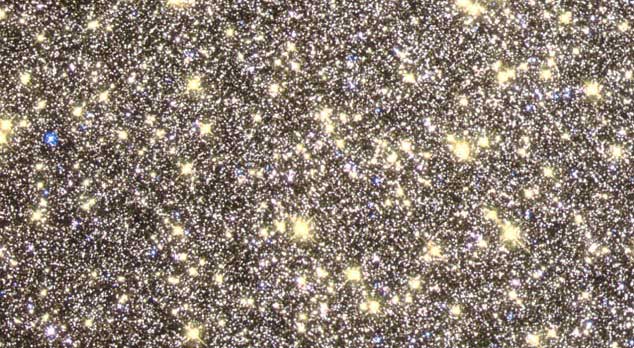The Center of Globular Cluster Omega Centauri

Explanation:
What is left over after stars collide?
To help answer this question,
astronomers have been studying the center of the
most massive ball of stars in our
Milky Way Galaxy.
In the center of
globular cluster
Omega Centauri, stars are packed in
10,000 times more densely than near our Sun.
Pictured above, the
Hubble Space Telescope
has resolved the very center of
Omega Centauri into individual stars.
Visible are many faint yellow-white stars that are smaller than our
Sun,
several yellow-orange stars that are
Red Giants, and an occasional
blue star.
When two
stars collide they likely either combine
to form one more massive star,
or they stick, forming a new
binary star system.
Close
binary stars interact,
sometimes emitting
ultraviolet or
X-ray light when gas falls from one star
onto the surface of a compact companion such as a
white dwarf or
neutron star.
Two such binaries have now been located in
Omega Centauri's center.
The star cluster lies about 15,000
light-years
away and is visible toward the constellation of
Centaurus.
Authors & editors:
Robert Nemiroff
(MTU) &
Jerry Bonnell
(USRA)
NASA Web Site Statements, Warnings,
and Disclaimers
NASA Official: Jay Norris.
Specific
rights apply.
A service of:
LHEA at
NASA /
GSFC
& Michigan Tech. U.

